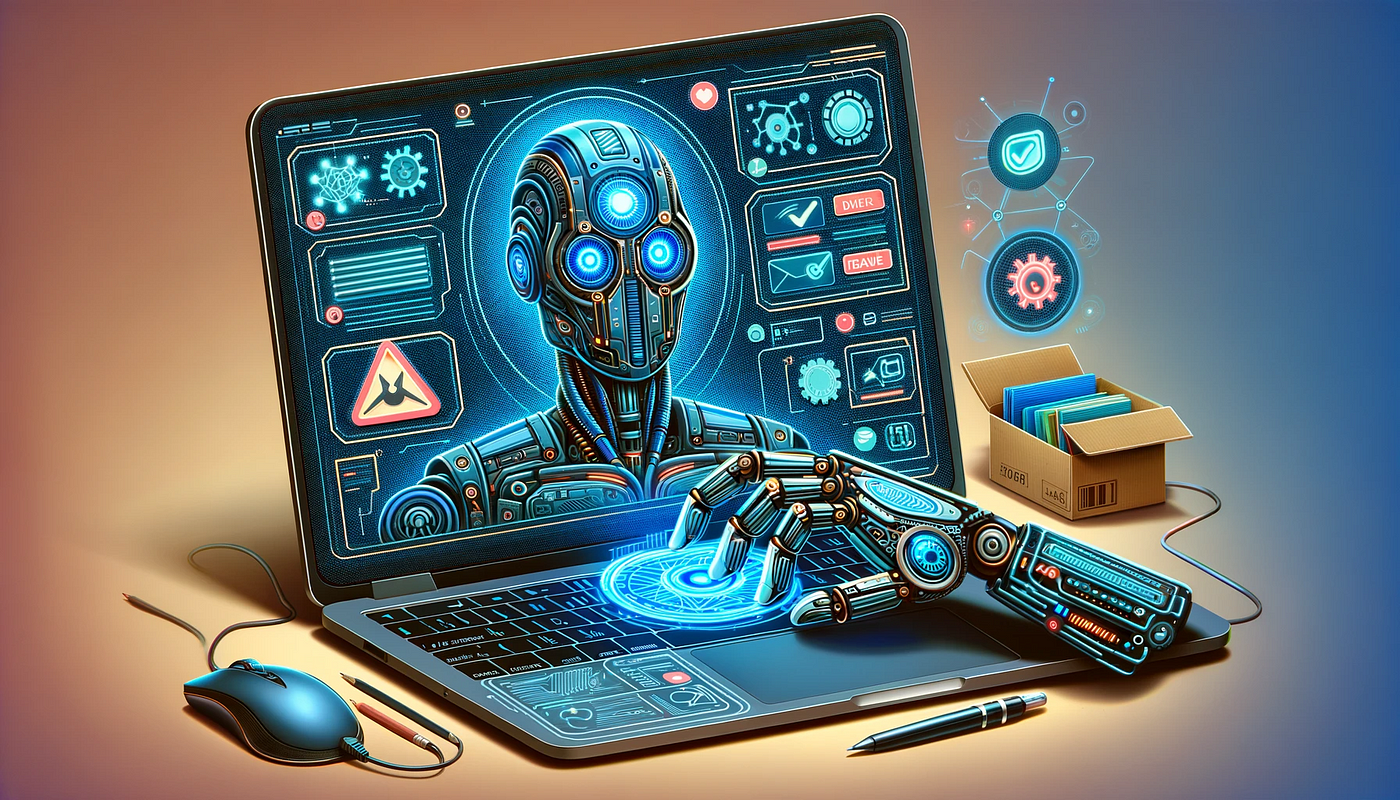Artificial Intelligence (AI) is a term that’s been thrown around a lot in recent years, often creating a bit of confusion. A common question that arises is, “Is AI a computer?” To clear things up, it’s essential to dive into what AI truly is and how it relates to computers. By understanding the relationship between AI and computers, we can better appreciate the role each plays in our technological world.
Defining AI
What is Artificial Intelligence?
Artificial Intelligence refers to the simulation of human intelligence in machines that are programmed to think and learn like humans. These machines can perform tasks that typically require human intelligence, such as problem-solving, understanding language, and recognizing patterns.
Different Types of AI: Narrow AI, General AI, and Super AI
- Narrow AI: Also known as weak AI, it is designed to perform a narrow task (e.g., facial recognition or internet searches).
- General AI: Also known as strong AI, it can perform any intellectual task that a human can do.
- Super AI: This is a hypothetical AI that surpasses human intelligence and capability.
Defining a Computer
Basic Definition of a Computer
A computer is an electronic device that processes data according to a set of instructions. It consists of hardware and software components and can perform a wide range of tasks from simple calculations to complex simulations.
Key Components of a Computer
- Central Processing Unit (CPU): The brain of the computer that performs instructions defined by software.
- Memory: Stores data and instructions for quick access by the CPU.
- Storage: Retains data permanently for long-term use.
- Input/Output Devices: Allow users to interact with the computer (e.g., keyboard, mouse, display).
The Relationship Between AI and Computers
How AI Operates on Computers
AI functions through complex algorithms and computational processes that run on computer systems. These algorithms allow machines to learn from data, recognize patterns, and make decisions.
Examples of AI Applications in Computers
- Virtual Assistants: Siri, Alexa, and Google Assistant utilize AI to understand and respond to user commands.
- Recommendation Systems: Netflix and Amazon use AI to suggest content based on user preferences.
- Autonomous Vehicles: AI processes sensor data to navigate and drive cars without human intervention.
AI as Software
Explanation of AI Being Software
AI itself is not a physical entity but a type of software that requires a computer to function. It’s a collection of algorithms that can process information and make decisions based on that data.
Difference Between AI Software and Traditional Software
Traditional software follows predefined rules and performs tasks exactly as programmed. AI software, on the other hand, can learn and adapt, improving its performance over time without explicit reprogramming.
AI Hardware Requirements
Hardware Necessary to Run AI
Running AI applications, especially those involving deep learning, requires significant computational power. This often necessitates specialized hardware.
Examples of Specialized AI Hardware
- Graphics Processing Units (GPUs): Ideal for parallel processing tasks typical in AI computations.
- Tensor Processing Units (TPUs): Custom-built by Google for AI and machine learning tasks.
- Field Programmable Gate Arrays (FPGAs): Flexible hardware that can be configured for specific AI tasks.
AI in Everyday Devices
Examples of AI in Common Electronic Devices
AI isn’t confined to supercomputers; it’s embedded in everyday devices:
- Smartphones: AI powers features like voice recognition and camera enhancements.
- Smart Home Devices: AI controls lighting, security, and climate systems based on user behavior.
How AI Enhances Functionality in These Devices
AI enables these devices to anticipate user needs, provide personalized experiences, and automate routine tasks, making daily life more convenient.
Misconceptions About AI and Computers
Common Myths About AI Being a Physical Machine
One of the biggest misconceptions is that AI is a tangible machine. In reality, AI is software that runs on hardware. The confusion often stems from representations in media and popular culture.
Clarifying the Distinctions
Understanding that AI is the intelligence behind the tasks and not the physical device itself helps clarify the distinction. The physical devices, like computers or robots, are the vessels through which AI operates.
Evolution of AI Technology
Historical Development of AI
AI has evolved significantly since its inception in the 1950s. Early AI research focused on problem-solving and symbolic methods. The advent of machine learning in the 1980s and deep learning in the 2000s revolutionized the field.
Milestones in AI Technology
- 1956: Dartmouth Conference, where the term “Artificial Intelligence” was coined.
- 1997: IBM’s Deep Blue defeats chess champion Garry Kasparov.
- 2012: AlexNet wins the ImageNet competition, demonstrating the power of deep learning.
AI and Machine Learning
Introduction to Machine Learning
Machine learning is a subset of AI that involves training algorithms to learn from data and make predictions or decisions. It’s a core component of modern AI.
How Machine Learning is a Subset of AI
Machine learning allows AI systems to improve their performance over time without human intervention. Techniques like supervised learning, unsupervised learning, and reinforcement learning are key to this process.
Real-World Applications of AI
AI in Healthcare
AI assists in diagnosing diseases, personalizing treatment plans, and predicting patient outcomes.
AI in Finance
AI powers fraud detection, algorithmic trading, and personalized banking services.
AI in Entertainment
AI curates content recommendations, creates realistic animations, and enhances user experiences in video games.
AI in Transportation
AI enables autonomous driving, optimizes traffic management, and enhances navigation systems.
Ethical Considerations of AI
Ethical Challenges in AI Development
AI development raises ethical issues such as bias in decision-making, job displacement, and the potential for misuse in surveillance.
AI and Privacy Concerns
AI systems often require vast amounts of data, raising concerns about data privacy and security. Ensuring responsible use and protection of data is crucial.
Future of AI and Computers
Predictions for AI Technology
AI technology is expected to continue advancing, with improvements in natural language processing, more sophisticated AI models, and broader applications across industries.
Potential Future Applications
Future AI applications could include more intuitive personal assistants, advanced medical diagnostic tools, and fully autonomous urban transportation systems.
AI and Human Interaction
How AI Interacts with Humans
AI interacts with humans through user interfaces like chatbots, virtual assistants, and automated customer service systems. It can also collaborate with humans in professional settings.
AI’s Impact on Society
AI has the potential to significantly impact society by improving efficiency, creating new job opportunities, and addressing complex global challenges. However, it also poses risks that need careful management.
Conclusion
In summary, while AI is not a computer, it relies heavily on computers to function. AI is a sophisticated software that requires robust hardware to process data and execute tasks. Understanding the distinction between AI and computers helps demystify their roles and interdependencies. As AI technology continues to evolve, its integration with computers will only deepen, leading to more advanced and intuitive applications that can transform various aspects of our lives.


